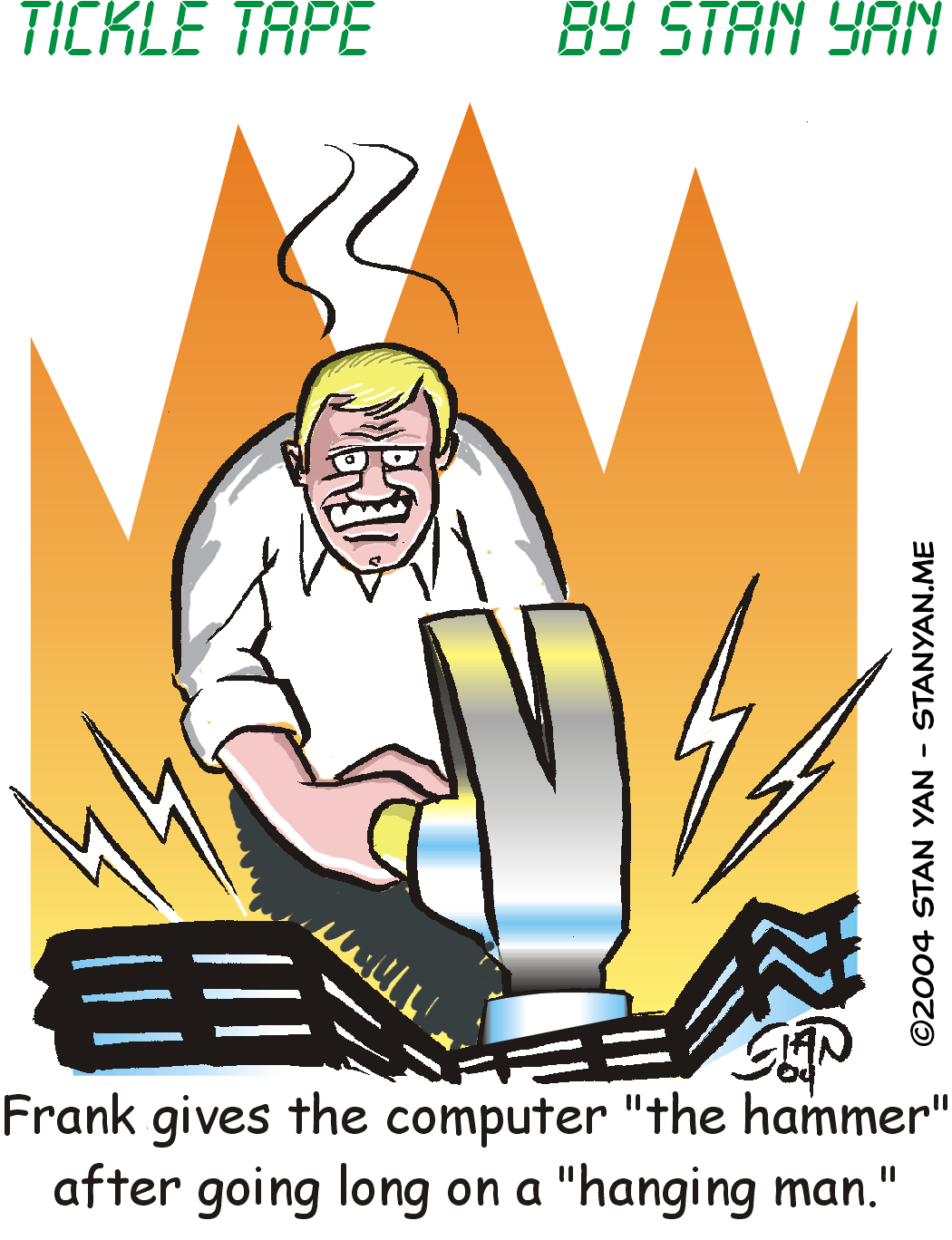Trading the markets is a stressful occupation. The markets are unpredictable and chaotic. No outcome is a certainty, and many times, when it seems as if you know where the market is going, you discover you’re wrong. It can be extremely confusing and disorienting. And this confusion and disorientation can produce stress. Winning traders must do whatever they can to remove some of the confusion and reduce stress. One of the best ways to relieve some of the stress, and put order into a face-paced unpredictable environment, is to organize your workspace.
With a new year starting next week, it’s a good time to clean up your workspace. Throw out the old and make room for the new. Clutter and stacks of old paperwork can be distracting. Piles of newspapers you’ll never read can make you feel as if the clutter is closing in on you, and cramping your style. Removing some of the clutter and opening up some space often symbolically gives you increased psychological space and renewed creative vigor. You feel you have more room to breathe. Some traders may be the Oscar Madisons of trading; they may prefer a messy workspace and feel that it is more stressful to organize it than to succumb to the disarray. But most people associate untidiness with confusion, chaos, and ultimately, stress.
An organized workspace, in contrast, is less distracting. When one is trading, it’s essential to focus on your screens. Too much clutter in the same room, or on one’s desk, can grab one’s attention and shift it away from monitoring the trade of the moment. A clean, sparse and organized workspace makes many people feel that they have greater control. They may not be able to control the markets, but at least they’ve mastered their environment and minimized any possible psychological influence that it may have on their awareness and ability to objectively assess market conditions.
Organizing one’s workspace does indeed take some effort, but it is well worth the price when one considers the piece of mind you’ll gain. The first step in an organization is to throw out old, worthless information. This is the hardest part. We collect books and papers because we think we will need them. Yet many times we accumulate so much stuff that its actual contribution is minimal. We’ll never find the time to read all of it, and it will just take up valuable workspace. But it’s hard to throw it away. It took time and energy to assemble these items, and throwing it out subtly suggests that you wasted your time collecting the stuff. But most of it can be tossed out. Make tough decisions and commit yourself to throw out at least 25% of it. If you still can’t throw it away, box it up, put it away, and sift through it when you find the time. But get it out of your workspace so that it no longer impinges on your consciousness.
Developing an informal filing system can be helpful. It doesn’t have to be formal with folders for each topic and precise categories typed on labels for each folder. Sometimes you can merely place documents for a particular task or project in a large attractive looking box. You can then pile the boxes in a corner of your office, or if it is still a distraction, you can stack the boxes in the garage. But it’s important to get it off your desk and prevent it from encroaching on your workspace, and more importantly, on your mind.
Relieving clutter and working in a sparse workspace can greatly relieve stress. The markets are impossible to control, but your workspace is something you can master by keeping it organized. So as the new year begins, throw out all the old stuff taking up precious space. You’ll feel energized and ready to tackle the challenges that the new year has to offer.

